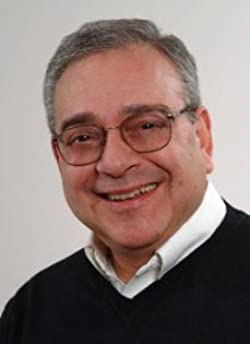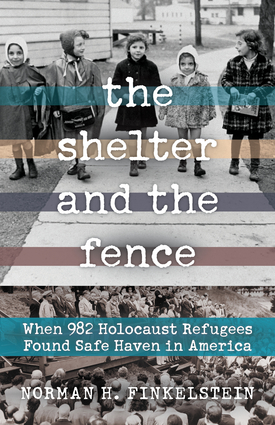It is my absolute honor to introduce Norman H. Finkelstein to chat about his new nonfiction middle grade book, THE SHELTER AND THE FENCE: WHEN 982 HOLOCAUST REFUGEES FOUND SAFE HAVEN IN AMERICA (Chicago Review Press, 2021). It is a fascinating exploration of the little-known Fort Ontario Emergency Refugee Shelter set up during WWII. Norman brings history to life and makes it meaningful to young readers.
On a personal note, I was first introduced to Norman and his work at an event in Los Angeles many years ago. I was so inspired by the care he took with his research and the passion he shared for his books. I have been a fan ever since. I am delighted to have the opportunity to interview him.
Welcome, Norman!
The history of Fort Ontario is fascinating. I believe the story of this unique refugee shelter would surprise many. Why do you think this slice of history has not been more readily shared before?
I agree. Not many people are aware of the Shelter. I suppose its because of the enormity of the Holocaust era. The story of 1,000 people pales in comparison to the totality of six million lost individuals. Also, focus has been on the European experience, as it should be, so the story of the Fort Ontario Shelter got lost over the decades.

There was a mix of ages among the refugees, almost like the organizers were trying to create a small, contained community that would be socially sustainable. Was this by design?
Actually, yes. The War Refugee Board put an emphasis on bringing over intact families. They also selected applicants by profession. The goal was to create an enclosed community at the Shelter. There were artists, writers, shop owners and professionals included although they were not allowed to work outside the Shelter and their talents were of limited value within the Shelter.
Can you share a bit about your research process? In the book, you share a lot of details about some of the refugees. How difficult was it to find the information you needed?
I love the research part of my writing. I used contemporary newspaper articles and most importantly the oral histories of survivors. The refugees were/are very interested in preserving their personal stories. They contributed generously to oral histories which are now housed at the Penfield Library at SUNY Oswego and the United States Holocaust Memorial Museum in Washington. I attended their 75th anniversary of arriving in Oswego where 17 surviving refugees were present to relate their stories. Toward the end of their stay in late 1944, a Congressional committee arrived to take testimony concerning the future status of the refugees. The transcript of those hearings provided a lot of personal information. Also, the Safe Haven Museum in Oswego produced several books about the Shelter containing personal reminiscences. There was lots of information.
Has there ever been another refugee shelter like Fort Ontario? Do you think it would be a sustainable model today?
The Shelter at Fort Ontario was under the control of the War Relocation Authority, the same governmental agency which ran the internment camps for Japanese Americans during World War II. Although those internment camps are a blot on American history, the WRA did an admirable job dealing with the Oswego refugees. Getting those refugees to the United States during the era of rigid immigration laws was a difficult government decision at a time when antisemitism was rampant in the United States (even during the war). The US was trying to convince other countries to accept war refugees. The only reason those 982 individuals were allowed into the United States was to demonstrate that America practiced what it was preaching to other countries. Again, it was too little and too late but for those 982 it was a life changing experience. Remember, the refugees each signed statements stating they would be returned to their homelands after the war. They were, essentially, illegal aliens until President Truman used an imaginative ploy which allowed them to stay. Given the anti-immigration views of many Americans today, I doubt such a rescue attempt could occur again.

Are there any interesting facts that didn’t make it into the final draft?
I would have liked to explore in greater detail the individual stories of refugees once they left the Shelter. Also, I was greatly impressed by the pro-active work of the city’s public school officials in embracing Shelter children. Material for a follow-up book?
Thank you, Norman!
Norman H. Finkelstein is a retired public-school librarian and a longtime teacher of history at Boston’s Hebrew College. He is the author of twenty well-reviewed nonfiction books and the winner of two National Jewish Book Awards and the Golden Kite Honor Book Award for Nonfiction. His latest books are The Capture of Black Bart: Gentleman Bandit of the Old West and Union Made: Labor Leader Samuel Gompers and His Fight for Workers’ Rights. He lives in Framingham, Massachusetts.